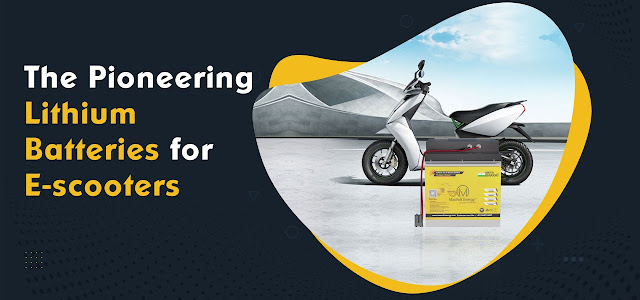The Advantages of Lithium-Ion Batteries for Rechargeable Vehicles
A lithium battery has the highest energy density per weight, is the lightest metal, and has the highest electric reaction. The lithium products introduced by Maxvolt Energy have succeeded in the market. The use of lithium-ion batteries has increased dramatically in recent years. They have various advantages and advancements over other battery technologies such as nickel metal hydride, lead acid batteries, and nickel-cadmium batteries.
Lithium-ion batteries power practically all the electrical devices around us, from headphones to computers and mobile phones. These batteries are prominent in the electric vehicle industry and consumer devices. Because lithium-ion batteries are the best energy storage devices for powering electric vehicles, demand for them has skyrocketed in recent years.
Government agencies and other battery manufacturers are researching ways to increase the adaptability of these batteries for the electric vehicle sector.
The Introduction of Lithium-Ion Batteries
A lithium-ion battery is a type of rechargeable battery in which lithium ions travel from the negative electrode to the positive electrode and back during discharge and charging.
Before the popularity of lithium-ion batteries in the 1990s, lead-acid batteries were invented and used in the 1800s. As a result of their superior performance, nickel-cadmium and nickel-metal hydride batteries became popular.
Still, a quick-rechargeable battery was necessary. The Li-ion battery was developed in 1991 following extensive global research by several scientists. Currently, these batteries are used on the market due to their popularity.
Lithium-ion batteries gained popularity in the consumer electronics industry because they are rechargeable. Any gadget that requires a portable rechargeable battery has become industry standard. They are also transforming the ecosystem due to their tremendous energy density.
Batteries made of lithium-ion can operate in different conditions, including low and high temperatures; high and low drains; shocks, and vibrations.
The Advantages of Lithium-Ion Batteries
High Power Density
Lithium-ion batteries can store massive amounts of power. They have one of the highest energy densities of any battery type, ranging from 100 to 200 watt-hours per kilogram. As a result, they serve as high-power sources for regenerative applications such as electric vehicles.
Environmental-Friendly
Lithium is non-toxic and 100% recyclable. Batteries can be recycled by returning them to companies that extract lithium, cobalt, nickel, and manganese salts from them. These extracted salts are repurposed in the production of various energy storage technologies.
Rapid charging
Lithium-ion batteries can be charged in one hour or less. It is far faster than charging lead-acid batteries, which can take up to 10 hours. Charging Ni-MH batteries takes two to four hours. Machines have reduced idle time with lithium-ion batteries.
Easy to maintain
Lithium-ion batteries require less maintenance than other types of batteries to stay operational. These batteries need no special care to extend their life because they have no memory effect.
Lifespan
Lithium-ion batteries have a longer life expectancy due to their sluggish self-discharge rate. As a result, the average lifespan of a lithium-ion battery exceeds eight years. This life duration can be extended further with proper maintenance and servicing. Lithium-ion batteries have good performance for high-power applications and can produce more current than other battery alternatives.
Conclusion
Because of these factors, lithium-ion batteries have a wide range of uses. Lithium-ion batteries have gained popularity over the last decade due to their high energy density and extended life.
Visit Maxvolt Energy to learn more about lithium batteries.



.jpg)
Comments
Post a Comment